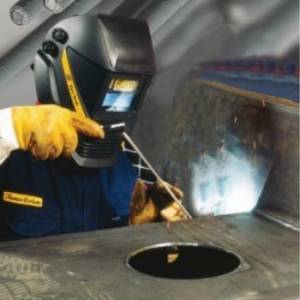Description
MMA Welding: Your Guide to Robust and Versatile Metal Joining
Metal Inert Gas (MIG) welding and Tungsten Inert Gas (TIG) welding often steal the spotlight, but Manual Metal Arc (MMA) welding, also known as stick welding, remains a cornerstone of metal fabrication and repair. Its ruggedness, portability, and relative simplicity make it an ideal choice for a wide range of applications, from construction and automotive repair to fabrication shops and even DIY projects.
What is MMA Welding?
MMA welding uses a consumable electrode coated with flux to create an electric arc between the electrode and the base metal. This arc melts both the electrode and the base metal, forming a weld pool that solidifies to create a strong joint. The flux coating on the electrode plays a crucial role, shielding the weld from atmospheric contamination, stabilizing the arc, and contributing alloying elements to enhance weld quality.
Key Advantages of MMA Welding:
- Portability: MMA welders are relatively lightweight and portable, making them suitable for on-site work and locations with limited access to power.
- Versatility: MMA welding can be used on a variety of metals, including mild steel, stainless steel, cast iron, and aluminum (with specialized electrodes).
- Ease of Use: While mastering the technique requires practice, MMA welding is generally easier to learn than other welding processes. The simpler equipment setup also contributes to its user-friendliness.
- Deep Penetration: MMA welding offers excellent penetration, creating strong, robust welds ideal for structural applications.
- Cost-Effective: The initial investment for MMA welding equipment is typically lower than for MIG or TIG welding, making it a more accessible option for beginners and smaller projects.
- Outdoor suitability: The shielding provided by the flux makes it less sensitive to wind and other environmental factors compared to some other welding methods.
Applications of MMA Welding:
- Construction: Welding structural steel, reinforcing bars (rebar), and other components.
- Automotive Repair: Repairing damaged car bodies, chassis, and other components.
- Fabrication: Creating metal structures, gates, railings, and other fabricated items.
- Maintenance & Repair: Repairing machinery, equipment, and pipelines.
- Art & Sculpture: Creating artistic metalwork.
What you'll need for MMA Welding:
- MMA Welder: Choose a welder with appropriate amperage range for your materials and thickness.
- Electrodes: Select electrodes based on the base metal being welded and desired weld properties. Different electrodes are available for various materials and applications.
- Welding Helmet: Essential for eye protection from the intense arc light. Auto-darkening helmets are highly recommended for increased safety and comfort.
- Welding Gloves: To protect your hands from heat and sparks.
- Chipping Hammer and Wire Brush: For cleaning weld spatter and slag from the weld.
- Ground Clamp: To connect the welder to the workpiece, ensuring a proper electrical circuit.
Choosing the Right MMA Welder:
The choice of MMA welder depends on factors like the thickness of the metal being welded, the type of metal, and the frequency of use. Consider the following:
- Amperage Range: A higher amperage range allows for welding thicker materials.
- Duty Cycle: The duty cycle indicates the percentage of time the welder can operate at its maximum amperage without overheating. A higher duty cycle is better for longer welding sessions.
- Features: Look for features such as hot start, arc force, and anti-stick functions to improve weld quality and ease of use.
Conclusion:
MMA welding provides a robust and versatile solution for joining metals in various applications. Its accessibility, portability, and strong weld quality make it a valuable skill for both professionals and hobbyists alike. With proper training and practice, you can master MMA welding and create strong, reliable welds.
